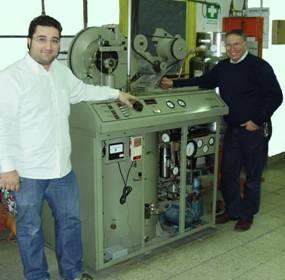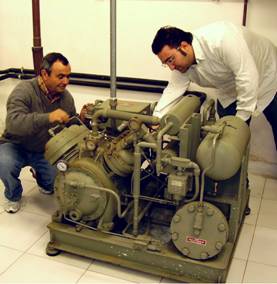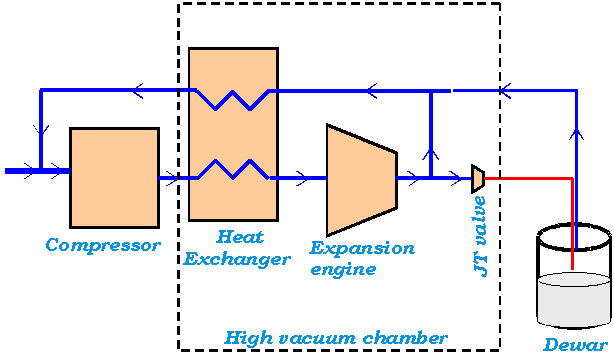| |
|
|
Helium Liquefier Laboratory
DiFi Laboratory
Laboratory directed by: Prof. Roberto Boscaino
The helium liquefier consists of a liquefier module (KOCH Mod.1410) (left photo with Mr G. Lapis and Mr G. Napoli) and a compressor module (two compressors KOCH Mod. 1400) (right photo with Mr G. Napoli and Mr F. Testaino). The liquid production rate is 20 liters/h in steady state operation, using both compressors and liquid nitrogen pre-cooling.
| |

|

|
|
| |
Operating Principle : In operation helium gas is compressed (compressor module) and delivered to the liquefier module. The gas is cooled in the liquefier by heat transfer in the heat exchanger , by work extraction in the expansion engine, and, finally, by expansion in the Joule-Thomson valve. All these processes take place in a high-vacuum chamber. The liquid helium produced is delivered to an externally located dewar via a coaxial delivery tube. Initial pre-cooling by liquid nitrogen is optional (heat echanger not shown in the diagram).
|
|
| |
|
|
| |
In the real set-up, the liquefier module includes two heat exchangers
and two expansion engines. It is fed by two compressors. In steady
state operation the temperature at the output of the first expansion
engine is nearly 20 K and at the output of the second engine is
nearly 7 K. The liquid production is nearly 20 liters/h, if liquid
nitrogen pre-cooling is used.
|
|
|
|


